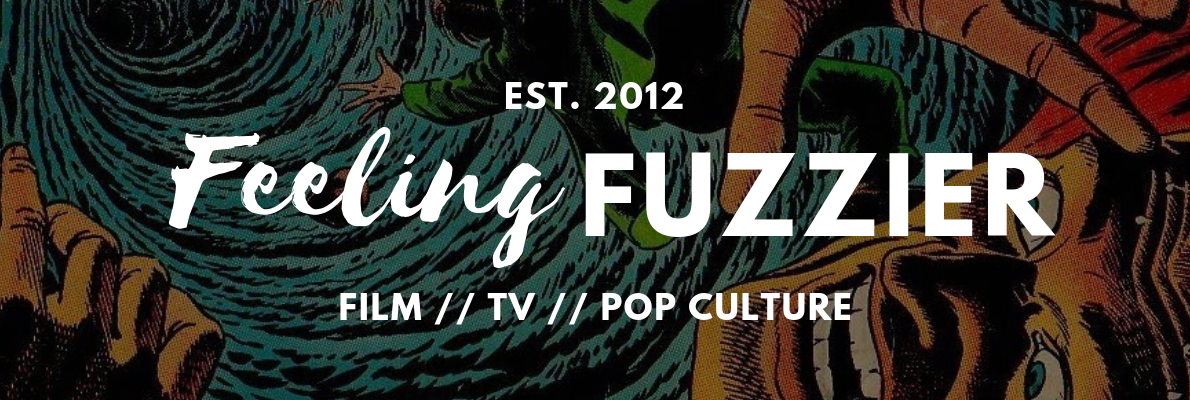With Blade Runner 2049 about to hit cinemas, I take a look back on the lasting legacy and impact of Ridley Scott's original Blade Runner.
It's 2019 and garish smoke stacks pour smoke into the hazy Los Angeles skyline; reams of glowing cars gently hum across the horizon and weave through littered streets. At the centre of this ugly metropolis stands a towering pyramid belonging to the Tyrell Corporation, an unmistakable evolution of an 80s vision of a hungry capitalist future built on burgeoning technologies like computing and robotics.
Striding through bustling Asian fusion market stalls is Deckard (Harrison Ford), a grizzled figure who once upon a time hunted and destroyed rogue robots – or replicants – as they have come to be known. Unmistakable from the humans who created them, replicants are both a blessing and a plague unto society; Deckard – a blade runner – is roped back into the fold when a quartet of replicants make a break for it from an off-world colony. His only goal is to track and put an end to the rogue units before they cause harm.
This is the nightmarish near future hellscape as portrayed in Ridley Scott's iconic 1982 film Blade Runner. A neon-soaked neo-noir set in the very near future, Scott's film has a strange story both on and off the screen, not to mention a rich legacy. Its sequel – Blade Runner 2049 – hits cinemas tomorrow, so I thought I'd delve back into Scott's original film and relive its suffocating richness.
 The first thing you notice about Blade Runner is that it arrives fully formed; this haunting vision of the future pops out of the screen and makes you sit up and take notice.
The first thing you notice about Blade Runner is that it arrives fully formed; this haunting vision of the future pops out of the screen and makes you sit up and take notice.It is both detailed enough to immerse you in its world and light enough on specifics that you continue to lean deeper to uncover more of its mysteries, some of which I hope are explored in greater detail in the sequel. Scott packs every frame with grubby little details that reward repeat viewings; every minute object feels tangible and vivid, with contrasting colour schemes that lift each scene off the screen.
Similarly, Vangelis' soundtrack – which plays around with everything from throbbing electro to Oriental cues – captures the rich texture of Blade Runner's universe as well as its decay and isolation, pairing with the city, its hive activity and the lonely figure cutting through it all.
Its status as a cinematic milestone doesn't exclude Blade Runner from criticism; truth be told, it's far from perfect. Watching it back only recently, it struck me just how stripped back the narrative is. Rich in meaning and rife with symbolism sure, but at its core Blade Runner is a surprisingly straightforward film about a private investigator who has a licence to bend the law, a doomed romance and a frenetic manhunt. It's like umpteen crime thrillers that have come before, albeit with a new setting and an aesthetic all of its own.
This simplicity works both against it and in its favour; while easy to follow, the pace does lag for vast swathes of the film. Knowing where everything is headed as I did, the pace can appear achingly slow at times. Scott practically lets the audience soak in the surroundings, often pausing to just let the world continue to zip by. On the other hand, one could argue its simplicity stems directly from its noir roots (am ambiguous hero, the femme fatale) and allows the film to remain focused on its weighty themes whilst only following a small circle of characters.
And what captivating themes they are. What does it mean to be human; what are the moral implications of genetic engineering; is human hubris our own undoing. Scott packs his film full of religious imagery and symbolism as well; eyes, which are often said act as windows into the soul, are another recurring image. Cyberpunk begins to creep into the film as does an undercurrent of environmental commentary.
Famously Blade Runner has undergone several editing room changes and had its distinctive neo-noir grubbiness cribbed by a whole range of films, television shows and animes since arriving on the scene. The 2004 revival of Battlestar Galactica is one such example, as is the popular Ghost in the Shell series and the Deus Ex videogames. One could even make an argument for Scott's vision of a sprawling cityscape as a defining influence on George Lucas' depiction of Coruscant in the Star Wars prequels.
Several cuts – theatrical, director's, final – dilute the film's impact, in my opinion, with conflicting opinions from the filmmakers and stars on its true intention and meaning. Hopefully, Denis Villeneuve's sequel will offer some form of resolution in this regard. That said, the lingering questions still promote discussion and debate, which is never a bad thing with regard to film.
With its follow-up already garnering positive reviews, Blade Runner's direct (and tangential) legacy appears to be well-preserved in 2017. Its power and resonance still hold weight to this day and, unlike tears in rain, won't be washed away and will continue to play a role in shaping cinema well into the future. And while some of its creative decisions weigh it down upon repeat viewings, its importance hasn't been erased in the slightest.
Blade Runner 2049 opens in cinemas across Australia tomorrow, Thursday October 5.




No comments:
Post a Comment